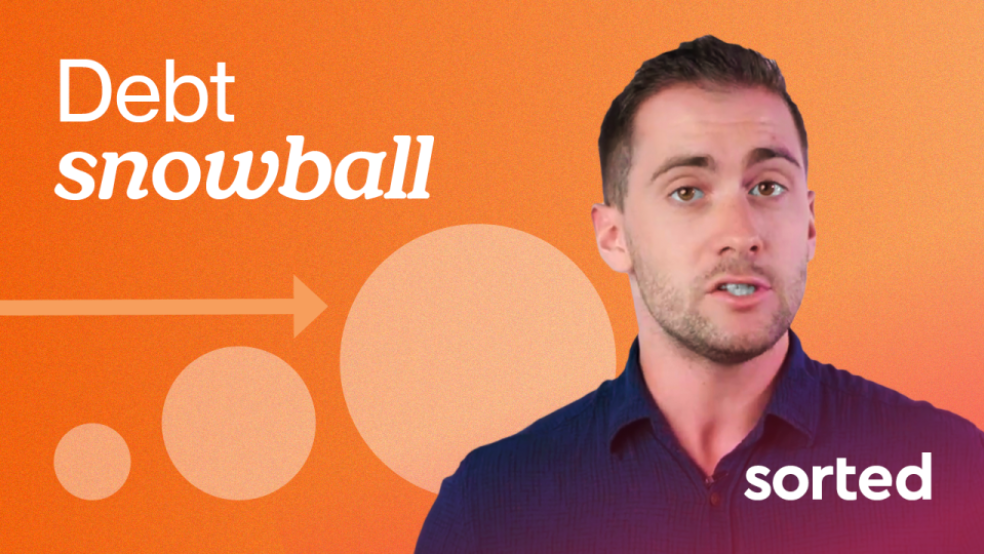
Planning & budgeting
Saving & investing
KiwiSaver
Tackling debt
Protecting wealth
Retirement
Home buying
Life events
Setting goals
Money tracking
Plan your spending with a budget
Getting advice
Studying
Get better with money
What pūtea beliefs do you have?
How to build up your emergency savings to cover unexpected costs
How to save your money
How to start investing
Find a financial adviser to help you invest
Your investment profile
Compound interest
Net worth
Types of investments
Term deposits
Bonds
Investment funds
Shares
Property investment
How KiwiSaver works and why it's worth joining
How to pick the right KiwiSaver fund
Make the most of KiwiSaver and grow your balance
How KiwiSaver can help you get into your first home
Applying for a KiwiSaver hardship withdrawal
How to use buy now pay later
What you really need to know before you use credit
How to get out of debt quickly
Credit reports
Know your rights
Pros and cons of debt consolidation
Credit cards
Car loans
Personal loans
Hire purchase
Student loans
Getting a fine
What happens if I start to struggle with moni?
How to protect yourself from fraud and being scammed
About insurance
Insurance types
Insuring ourselves
Wills
Enduring powers of attorney
Family trusts
Insuring our homes
Losing a partner
Redundancy
Serious diagnosis
How to cope with the aftermath of fraud
Separation
About NZ Super – how much is it?
When you’re thinking of living in a retirement village
How to plan, save and invest for retirement
Manage your money in retirement
Find housing options in retirement
Four approaches to spending in retirement
Planning & budgeting
Saving & investing
How to build up your emergency savings to cover unexpected costs
How to save your money
How to start investing
Find a financial adviser to help you invest
Your investment profile
Compound interest
Net worth
Types of investments
Term deposits
Bonds
Investment funds
Shares
Property investment
View all
KiwiSaver
Tackling debt
How to use buy now pay later
What you really need to know before you use credit
How to get out of debt quickly
Credit reports
Know your rights
Pros and cons of debt consolidation
Credit cards
Car loans
Personal loans
Hire purchase
Student loans
Getting a fine
What happens if I start to struggle with moni?
View all
Protecting wealth
Retirement
Home buying
8 November 2016
Reading time: 3 minutes
Posted by Tom Hartmann,
2 comments

What’s the best way to get debt-free?
The two strategies that often come up for repaying debts are either a debt “snowball” or an “avalanche”. The difference between the two depends on what you pay back first: the debt with the smallest balance or the debt with the highest interest rate. Which should you choose?
With a debt snowball, you knock out the smallest debt first, move on to the next smallest, and keep going until you’ve got the momentum of a snowball rolling downhill, eventually taking them all out. There are two advantages to this: you get the boost of seeing one of your debts disappear sooner, and that sense of progress propels you towards eliminating the next one and so forth.
Much about money depends on how we think about it, and getting on a roll with a debt snowball can really work for some people. And since some of the small debts may be to family or friends, paying those back early can benefit those relationships, too.
A debt avalanche, on the other hand, is where you first take out the debt that’s costing you the most. You start with the highest-interest debt first, like a credit card or a car loan, and when that’s taken care of, move on to the one with the next-highest interest rate. Rinse and repeat.
Financially speaking, the avalanche is a quicker way out of debt, since we can save more on interest. It’s the most efficient way to repay.
For example, let’s say you had these two debts:
Car loan: $6,000 at 9.95%
Credit card: $12,000 at 19.95%
If you had extra money, which would you pay down first? I can see how tackling that car loan would seem less daunting.
If we carried on with just the minimum payments on these, it would take six and a half years to get debt-free and cost us $12,347 just in interest. Ouch. (It’s definitely worth paying more than the minimum!)
So let’s say we found $50 extra a month in our budget to pay down debt. Using Sorted’s debt calculator, we can calculate how much interest we would save and how much quicker we could be debt-free.
With the debt snowball – putting that $50 towards paying the car loan first and then the credit card – we would be debt-free a year and two months faster (so after four years four months) and pay $2,342 less in interest.
Cool.
How about the avalanche? We would start with the credit card instead because it has the highest interest rate. Then we would move on to the car loan. We would be debt-free two months sooner than the snowball (so after four years two months) and more importantly save another $660 in interest.
Even cooler.
So in terms of destroying debt, I’d rather have an avalanche on my side. But in many cases it doesn’t make a huge difference in terms of time and interest saved. And who knows? You may find that the psychological advantages of a debt snowball are what it takes to motivate you.
And let’s face it, without the motivation to get rid of debt that’s dragging us down and keeping us from getting ahead, we don’t even stand a snowball’s chance.
The real story here, beyond the snowballs and avalanches, is that putting in the extra money each month is what makes the most difference to becoming debt-free.
Coolest.
Use verification code from your authenticator app. How to use authenticator apps.
Code is invalid. Please try again
Don't have an account? Sign up
Or log in with our social media platforms


A free account gives you your very own space where you can save your tools and track your progress as you get ahead.
Or sign up using Google:




Comments (2)
Comments
30 March 23
BmxBandiT
Credit card debt is the easiest debt to accumulate. Credit cards MUST be returned to absolute ZERO money owed in order to reset its interest rates to minimum. Eg, I have Q card. $2000 credit which I have used. Many purchases are interest free for 6 to 12 months, then the real interest sets in. $2000 costs me $57 every month minimum payment. My monthly statement shows $2027 owing... $27 interest... but requires $57 minimum payment to avoid added fees. Once paid, my balance is $1970... $30 is available to use... BUT DONT USE IT! IF you keep it at $1970, the following month requires no payment, but adds $20ish... becoming $1990... then 1 month later $50ish... Don't be fooled. In a year, using the $30 credit made available, in 12 months you will pay $684 at least in interest, and your debt will be exactly the same... $2000 owed... add $35–$55 annual card fee every 6 months... and you have paid nearly half of what you owe in interest payments alone without lowering the $2000 limit even 1$.
$40 a week will have your $2000 debt cleared in 10 months... Cards are great if you have the income to pay down purchases within 90 days... minimum payments only will leave you paying $1k a year forever... That's why they never hassle you or write or email you asking for money. As long as minimums are met, that's their perfect client. You make them RICH!... PAY down that debt at $150 a month and I guarantee you will start receiving emails... letters... interest-free offers... credit increase offers... That's why the $70 to $110 per year card fee is there... no matter what... they WILL get money for nothing.
5 February 19
Niels
I have $18,000 home loans, $7,500 credit card debts- what to do.I am paying them off but what a squeeze !(still working on minimum wage.)
No one has commented on this page yet.
RSS feed for comments on this page | RSS feed for all comments